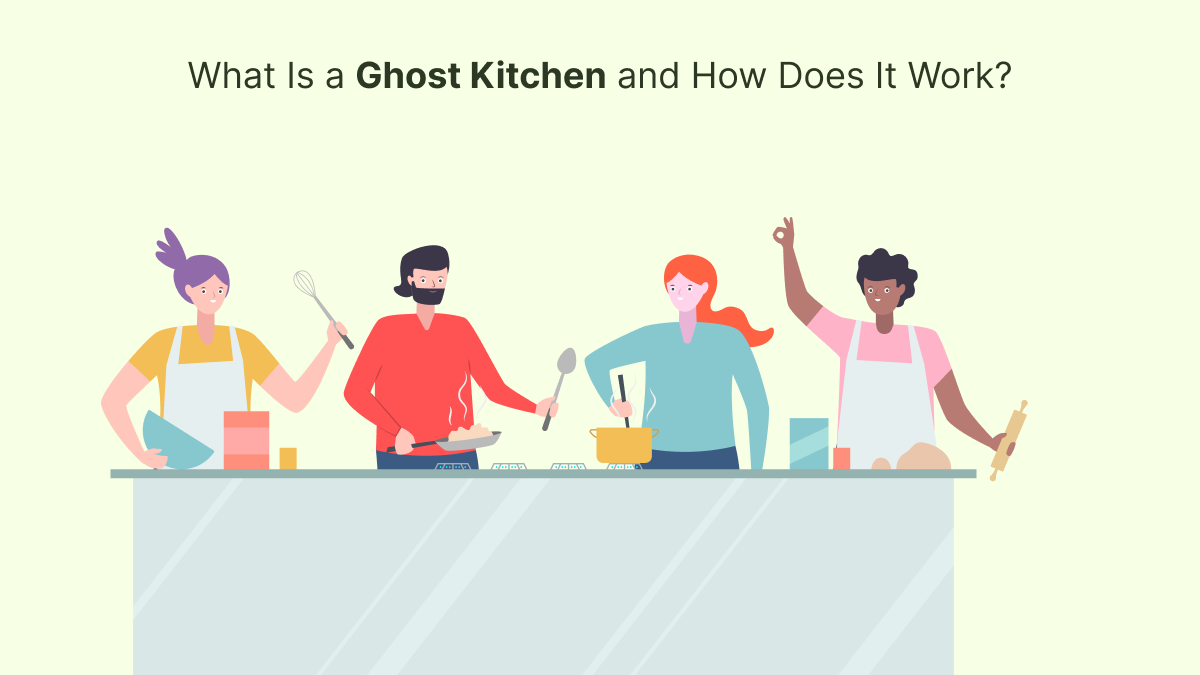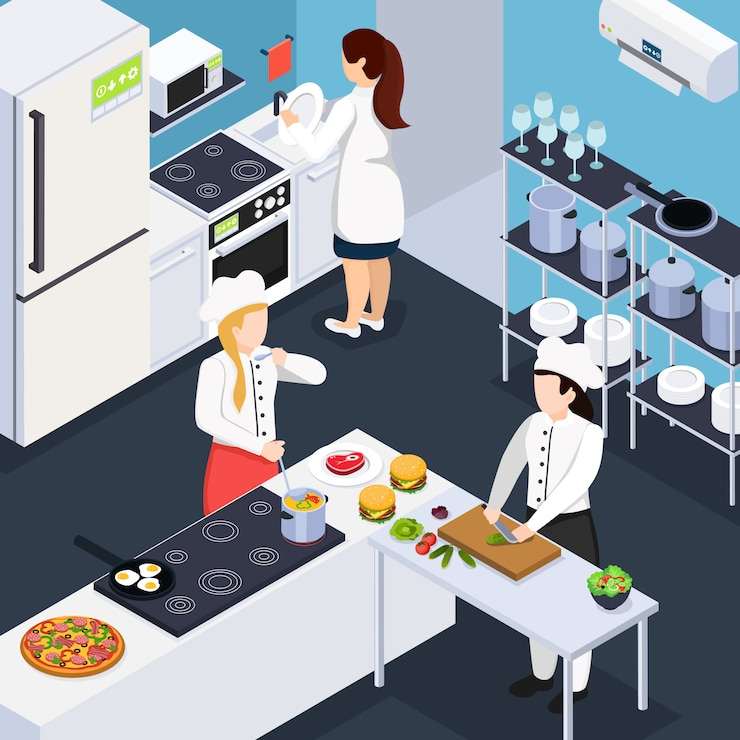What Is a Ghost Kitchen and How Does It Work

The restaurant industry has undergone massive changes in recent years, and one of the biggest innovations is the rise of a ghost kitchen. These kitchens operate without a traditional storefront, focusing solely on food delivery and takeout services. As consumer habits shift towards convenience and online ordering, ghost kitchens have become a popular business model for food entrepreneurs and established brands alike. Understanding how ghost kitchens work can help business owners decide whether this model suits their strategy and how they can leverage its benefits.
Understanding Ghost Kitchens
Definition of a Ghost Kitchen
A ghost kitchen, also known as a virtual kitchen or cloud kitchen, is a professional food preparation facility that operates without a dine-in restaurant. The meals prepared in these kitchens are sold exclusively through online platforms, either via third-party delivery services or direct-to-consumer channels. Unlike traditional restaurants, ghost kitchens do not have seating areas, waitstaff, or elaborate decor. They focus purely on preparing food efficiently for delivery.
How Ghost Kitchens Operate
Ghost kitchens rely on digital ordering systems and delivery services to fulfill customer requests. When a customer places an order through an online food delivery app or website, the kitchen receives the request, prepares the meal, and hands it off to a courier for delivery. Since these kitchens often function in shared spaces or warehouse-style environments, multiple brands can operate within the same location, minimizing overhead costs.
The Role of Technology in Ghost Kitchens
Technology plays a crucial role in the success of ghost kitchens. Online food ordering platforms, automated kitchen management systems, and delivery tracking tools streamline operations. Businesses use data analytics to understand consumer behavior, optimize menus, and improve delivery efficiency. With the increasing use of AI-powered tools, ghost kitchens can further enhance order accuracy and customer satisfaction.
Benefits of Ghost Kitchens
Lower Operational Costs
Traditional restaurants require significant investments in rent, decor, staffing, and utilities. Ghost kitchens eliminate many of these expenses by operating in smaller, more affordable spaces without the need for a storefront. Businesses can focus on food quality and delivery speed without worrying about maintaining a physical dining area.
Flexibility in Menu Offerings
Ghost kitchens allow brands to experiment with different menu items without the constraints of a traditional restaurant setting. Since there is no need to cater to in-person diners, businesses can quickly test new dishes, introduce seasonal options, or launch multiple virtual brands under one roof.
Scalability and Expansion
For entrepreneurs looking to grow their food business, ghost kitchens provide an efficient way to expand into new markets. Businesses can open kitchens in various locations without investing heavily in real estate or renovation. This model enables rapid scalability while maintaining low costs.
Increased Focus on Delivery and Customer Experience
As consumer demand for delivery services continues to rise, ghost kitchens can concentrate solely on meeting these expectations. With streamlined operations designed for takeout and online orders, businesses can optimize packaging, presentation, and delivery speed to enhance the customer experience.
Challenges of Operating a Ghost Kitchen
Dependence on Delivery Services
Since ghost kitchens rely heavily on third-party delivery apps, they may face challenges related to service fees, order delays, and quality control. Maintaining strong partnerships with delivery platforms and ensuring high food quality during transit is essential for customer satisfaction.
Competition in the Virtual Food Space
The ghost kitchen industry is highly competitive, with numerous businesses vying for online visibility. Without a physical presence to attract foot traffic, brands must invest in digital marketing strategies and maintain strong online customer engagement to stand out.
Maintaining Food Quality and Consistency
Ensuring food remains fresh and intact during delivery requires careful planning. Packaging design, temperature control, and portion sizes play a crucial role in customer satisfaction. Businesses must continuously refine their processes to guarantee consistency across all orders.
Regulatory and Licensing Requirements
Although ghost kitchens do not operate as traditional restaurants, they still require licenses, health permits, and compliance with food safety regulations. Business owners must navigate these requirements to avoid legal issues and ensure a smooth operation.
Different Types of Ghost Kitchens
Standalone Ghost Kitchens
These kitchens operate independently, focusing on a single brand or business. They prepare meals exclusively for delivery without sharing their space with other businesses.
Shared Ghost Kitchen Spaces
Multiple brands or food businesses operate within the same facility, utilizing common kitchen equipment and staff. This model helps reduce costs and allows businesses to collaborate on logistics and marketing.
Virtual Brands within Traditional Restaurants
Some traditional restaurants create additional virtual brands that exist solely online, allowing them to generate additional revenue streams without expanding their physical space.
Read More: Zomato Clone Scripts | Custom App Development Service
The Future of Ghost Kitchens
Growth in the Online Food Industry
As consumer preferences shift towards online ordering and food delivery, ghost kitchens will continue to grow in popularity. Advances in food technology, logistics, and AI-driven customer insights will further enhance the efficiency of this model.
Integration with App Development Companies
App development companies play a significant role in the success of ghost kitchens by creating user-friendly online ordering systems, delivery tracking applications, and AI-powered menu optimization tools. Businesses partnering with app developers can enhance their digital presence, streamline operations, and improve the overall customer experience.
FAQs
What makes a ghost kitchen different from a traditional restaurant?
Ghost kitchens focus solely on online orders and delivery services, eliminating the need for a physical dining space, waitstaff, or in-person customer interactions.
Can ghost kitchens operate multiple brands from the same location?
Yes, many ghost kitchens run multiple virtual brands within a single space, allowing businesses to cater to different customer preferences without expanding their physical footprint.
How do ghost kitchens handle food safety regulations?
Ghost kitchens must comply with food safety laws, licensing requirements, and health inspections similar to traditional restaurants, ensuring high standards in food preparation and handling.
Are ghost kitchens suitable for small food businesses?
Yes, ghost kitchens provide an affordable and scalable model for small food businesses to enter the market without the financial burden of maintaining a full-service restaurant.
What role do app development companies play in ghost kitchens?
App development companies help ghost kitchens optimize digital ordering systems, manage online sales, and improve customer engagement through user-friendly applications and advanced technology solutions.

Conclusion
Ghost kitchens have revolutionized the food industry by offering a cost-effective, flexible, and scalable way to serve customers. As technology advances and consumer habits evolve, the future of ghost kitchens looks promising, with increasing opportunities for businesses to succeed in the digital marketplace. Whether for startups, established brands, or a clone app development company supporting this industry, ghost kitchens present a dynamic solution for modern food delivery services.
- cloud_kitchen
- cloud_kitchen_business_model
- food_delivery_app
- zomato_clone_app
- online_food_delivery
- virtual_kitchen
- ghost_kitchen
- restaurant_management_software
- food_delivery_technology
- cloud_kitchen_solutions
- on-demand_food_delivery
- food_delivery_trends
- digital_kitchen
- food_business_app
- delivery-only_restaurant
- food_delivery_platform
- Art
- Causes
- Crafts
- Dance
- Drinks
- Film
- Fitness
- Food
- Games
- Gardening
- Health
- Home
- Literature
- Music
- Networking
- Other
- Party
- Religion
- Shopping
- Sports
- Theater
- Wellness



